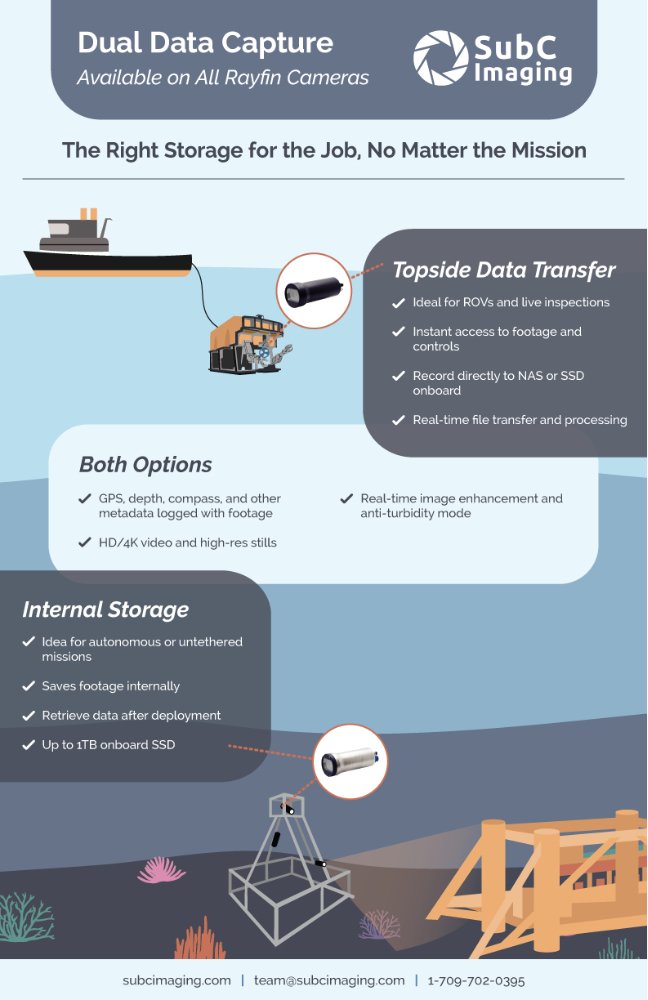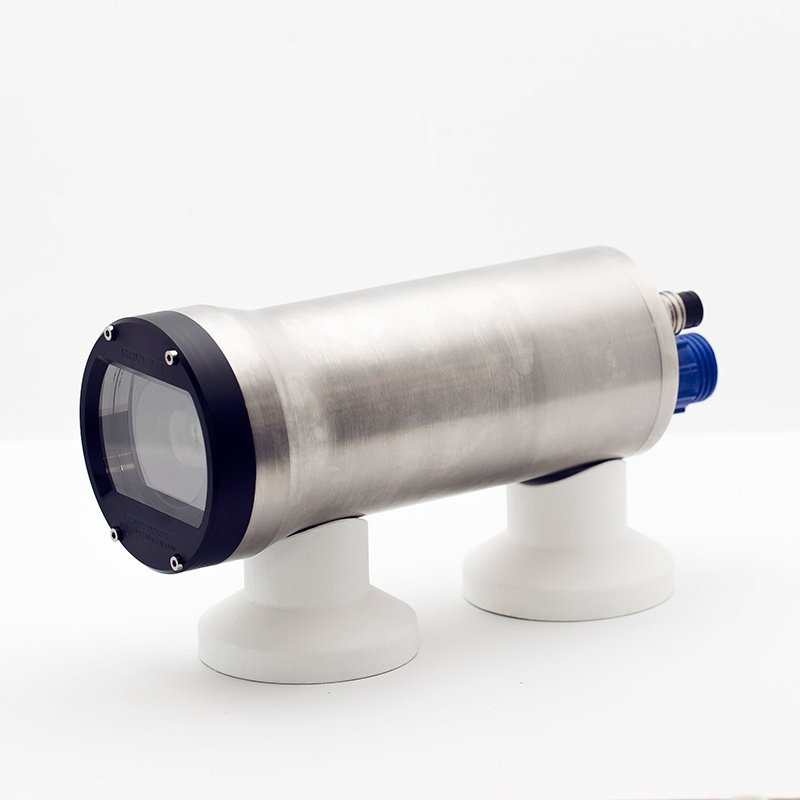Why Storage Flexibility is the New Standard for Marine Research
In many underwater imaging systems, you’re forced to choose: store data internally on the camera, or stream it topside during the dive. But not both.
Historically, that tradeoff made sense. Internal storage was for autonomous missions. Topside transfer was for real-time observations and data collection. But as marine science missions grow more varied, complex, and remote, that either/or approach is becoming less viable.
A growing number of researchers now expect something different. They expect storage flexibility and the ability to decide, per deployment, whether to record onboard or stream data live. It’s a quiet but important shift in how subsea cameras are being used, and it’s quickly becoming a standard.
The Limitations of Single-Mode Systems
Most subsea cameras are still built around a single recording method. If a camera is designed to record internally, it typically lacks the software to support real-time transfer to a surface vessel. If it’s optimized for topside recording, it may not include onboard storage at all.
This can limit how equipment is used. A camera well suited for a tethered ROV inspection may be useless for a remote seafloor observatory, and vice versa. For researchers working across diverse projects or locations, swapping out equipment mid-mission adds time, cost, and risk.
What’s Changing and Why
As marine science projects expand in scope, flexibility in equipment design has become more important. Research teams increasingly expect the same imaging platform to handle different deployment styles, from diver-held surveys to long-term autonomous deployments, without the need for separate recorders or custom integrations.
That’s led to the emergence of cameras that support selectable storage modes. These systems let users choose how to record data depending on the mission. Send it topside when a surface link is available, or store it onboard when autonomy or redundancy is required.
This shift reflects a broader trend in marine technology: imaging technology that can adapt to changing conditions, rather than requiring the field team to adapt to the limitations of their gear.
How Storage Flexibility Supports Better Research
The ability to choose between internal and topside storage offers practical benefits that go beyond convenience.
Improved mission planning: Teams can use the same camera across different deployment types, simplifying logistics.
Reduced data risk: Onboard storage acts as a fallback if topside transfer fails or vice versa.
Greater operational range: Flexible systems work in both real-time inspection tasks and long-duration, autonomous deployments.
Fewer hardware dependencies: No need to rely on external recorders, cables, or converters when switching modes.
In short, flexibility means more control. Not just over how data is recorded, but over how effectively researchers can respond when field conditions shift unexpectedly.
Selectable Storage the Rayfin Subsea Camera
One example of a camera designed with this flexibility is the Rayfin subsea camera. Rayfin cameras, available in Benthic, Coastal, or Micro models, allows operators to switch between internal recording and live topside transfer depending on the deployment without needing to change hardware or rely on external recording devices.
While not every subsea camera offers this kind of adaptability, the growing demand for it suggests it won’t be optional for long. Storage flexibility is no longer just a feature, it’s quickly becoming a baseline expectation for marine researchers working in unpredictable environments.
Conclusion
As subsea missions become more ambitious, the tools used to support them need to keep up. Cameras that can only do one thing — record internally or transfer data live — are starting to limit what field teams can accomplish.
Whether you’re preparing for a week-long autonomous deployment or a single-day ROV inspection, having the option to choose your recording method should be standard. The ability to adapt is no longer a luxury, it’s part of doing the job right.




